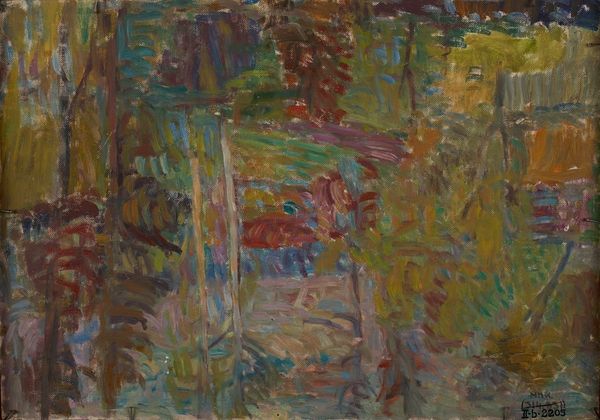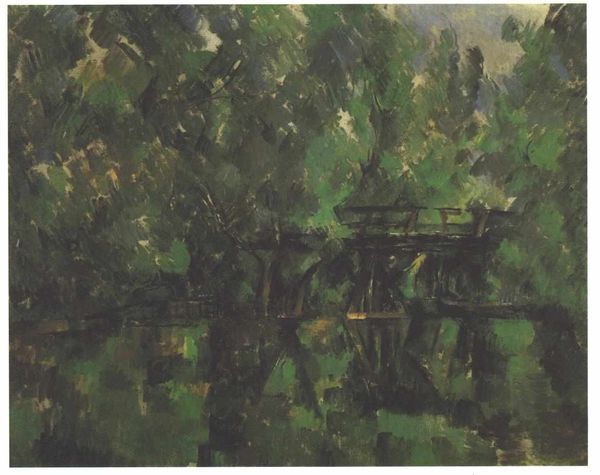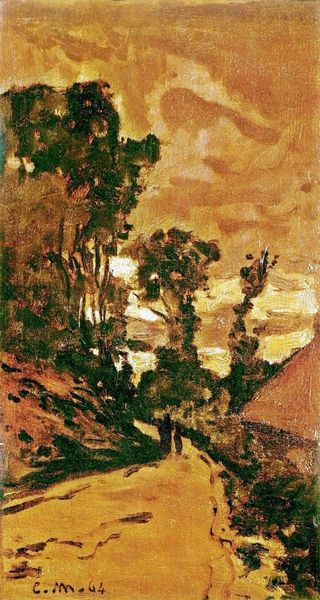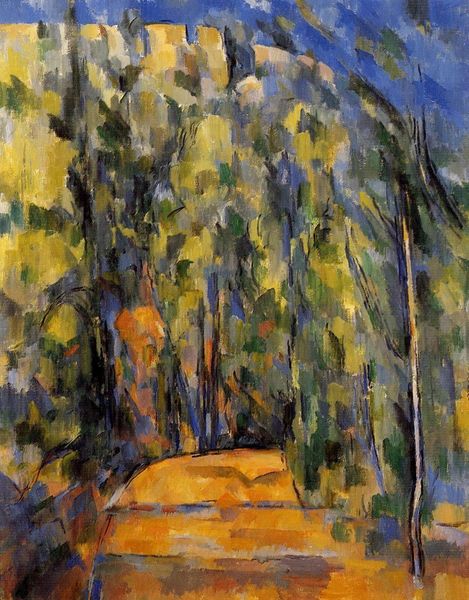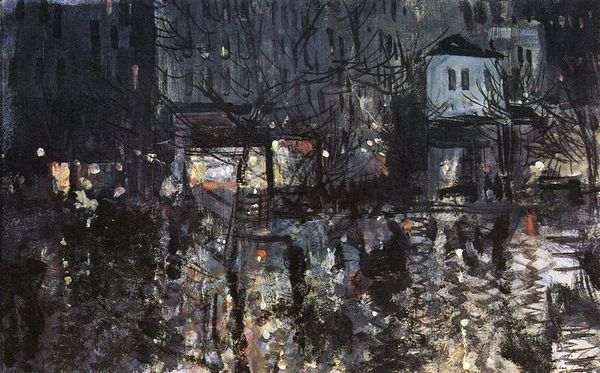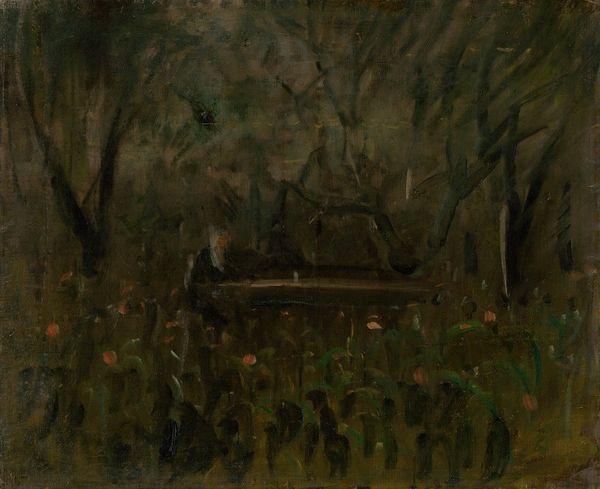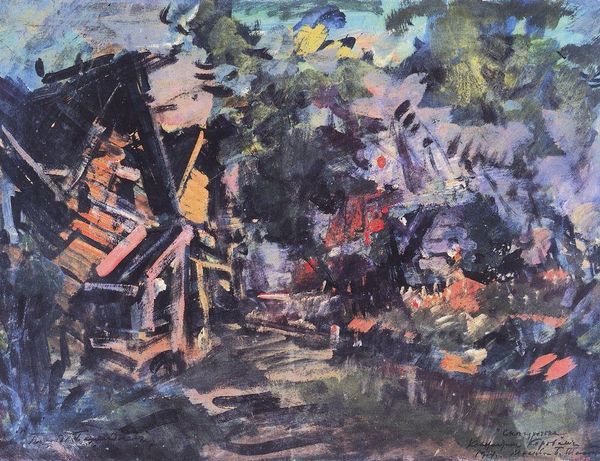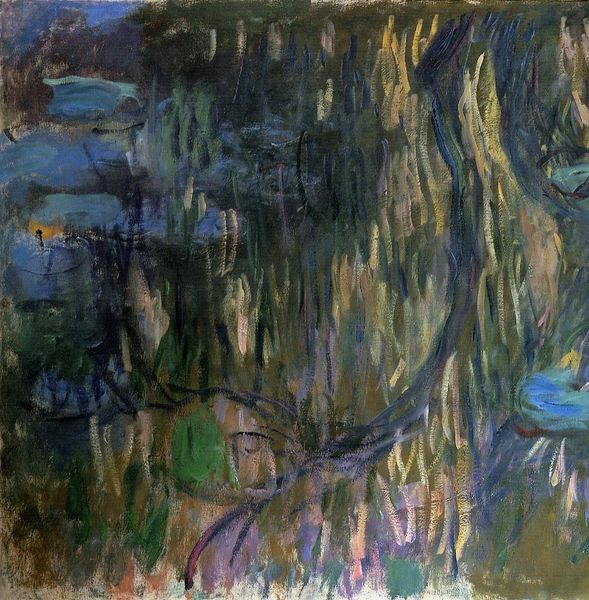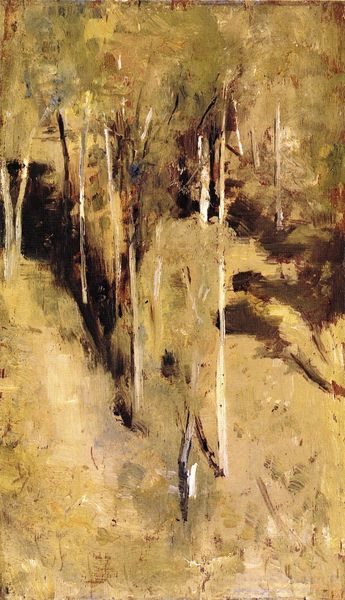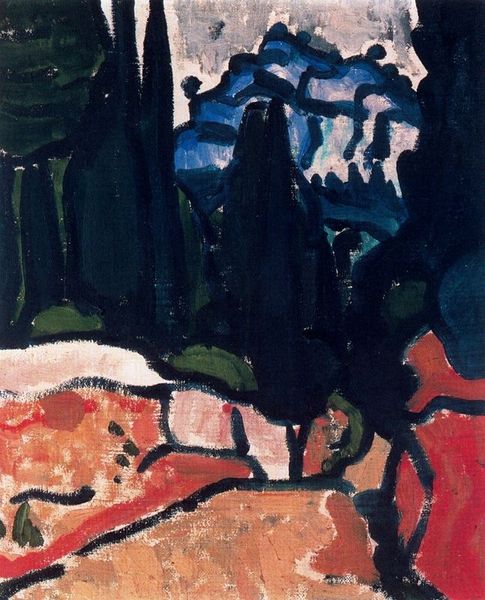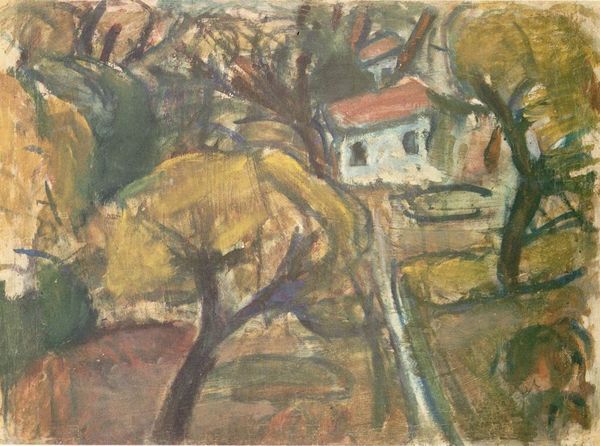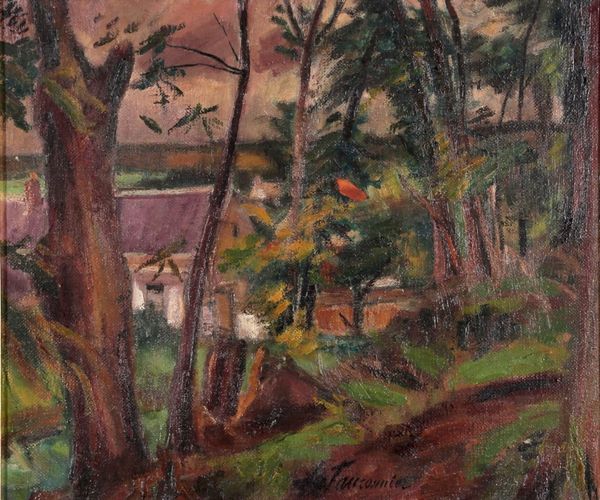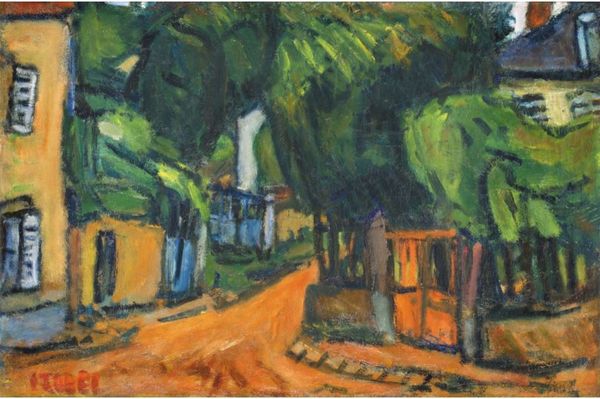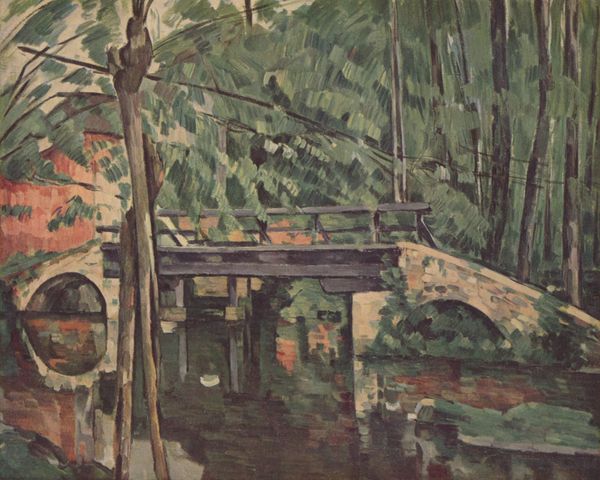
Copyright: Public domain
Curator: Here we have "Cell," painted by Konstantin Alexeevich Korovin in 1912. The work, rendered in oil paint, captures a forest landscape in an impressionistic style. Editor: Oh, wow. I'm immediately struck by the density of it all. It feels almost claustrophobic. Like the trees are pressing in, you know? Curator: Precisely. It's interesting how Korovin uses these rough brush strokes to evoke a feeling of being enveloped by the woods. Consider also how the landscape genre gains an elevated position by the means of oil on canvas, a material usually deployed for more noble subject matters like portraits and historic sceneries. Editor: Yeah, the impasto creates this really tactile sense of the bark and foliage, and this dark and light play. You feel the artist worked this up rather quickly, but with intense awareness. And that little spark of light back there, could it be the promise of exiting the woods, the promise of clarity? Curator: I am glad that you picked on this small area where light shines: It suggests how Korovin subverts traditional landscape painting to reflect modern urban anxiety in Tsarist Russia, an unstable political era shortly before World War I. The work reflects how rural landscapes offered respite for many urban residents who suffered social unrest and alienation. Editor: Right, like he's not just painting pretty trees; he is rather suggesting a search for solace. It makes you think about our own relationship with nature, or even how fleeting any safe and comfortable haven is. Curator: In essence, "Cell" embodies the political role that the Russian landscape occupied. Editor: Well, looking at it now, I get that the canvas mirrors how we ourselves search for calm. It makes me feel seen, you know?
Comments
No comments
Be the first to comment and join the conversation on the ultimate creative platform.
